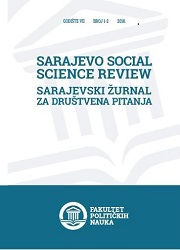Intervencije u post-9/11 vremenu - Komparativni pregled humanitarnih intervencija u Afganistanu, Iraku i Siriji
Intervention in the Post-9/11 Era - Comparative Overview of Humanitarian Interventions in Afghanistan, Iraq and Syria
Author(s): Damir BevandaSubject(s): International Law, Human Rights and Humanitarian Law, Security and defense, Evaluation research
Published by: Fakultet političkih nauka - Univerzitet u Sarajevu
Keywords: humanitarian interventions; 9/11; GWOT; Responsibility to Protect;
Summary/Abstract: September 11 terrorist attacks had an impact on many issues in international relations and international law. The matter of humanitarian intervention has also undergone substantial change and continued to evolve as the Global War on Terror continued. The first response of the United States was the intervention in Afghanistan, based on the natural right to defense defined in the UN Charter. The humanitarian intervention in Iraq that followed was guided by the principle of preemption, previously built into the U.S. National Security Strategy. It turned out that preemption wasn’t justified, however substantial reasons of a humanitarian nature remained for the intervention in Iraq. International law on humanitarian interventions continued to develop to a generally accepted principle of Responsibility to Protect (R2P), which, unfortunately, was not applied in Syria and led to an overall deterioration of the country.
Journal: Sarajevski žurnal za društvena pitanja
- Issue Year: VII/2018
- Issue No: 1-2
- Page Range: 95-116
- Page Count: 22
- Language: Bosnian

